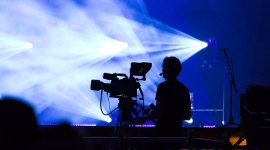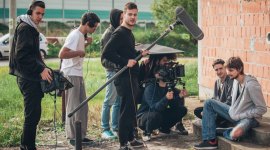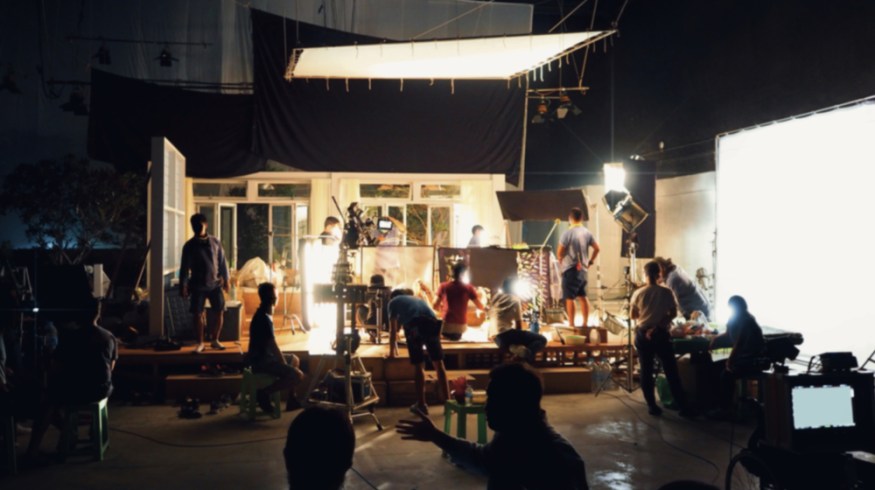
Upgrade Your Production with These Overlooked, but Essential Roles
These production crew roles are as essential as they are often overlooked. Make your life easier by adding them to your team.
It takes ambition, hustle, and a “can do” attitude to succeed in film and video — but just because you can do it all doesn’t mean you should.
Filmmaking is a collaborative process by nature, which is why it takes hundreds of people to create a Hollywood picture. Nonetheless, a lot of film and video creators still insist on operating as the sole creative force at every step of a project. It’s that mindset that can cause us to overlook some roles when we’re building a crew, specialized roles that, when filled, have the power to up the quality of a production significantly.
Let’s take a look at a few of these oft-forgotten roles and explore what they bring to a production — and what they can take off of your plate.
Production Assistant
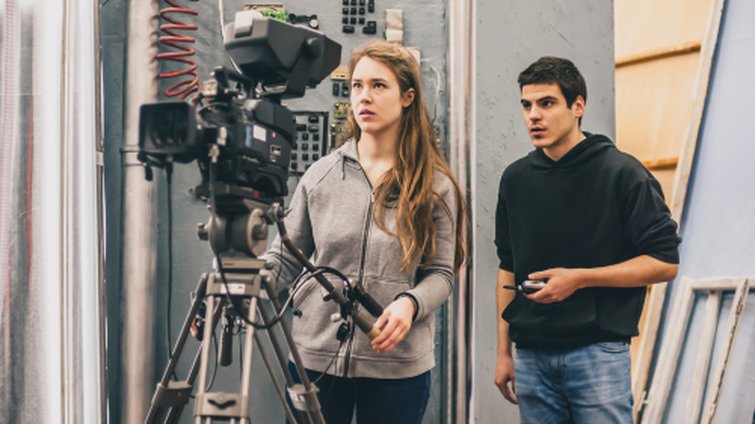
The Production Assistant helps with essential tasks that, ultimately, makes the production day run smoother. Image via guruXOX.
A production assistant (PA) isn’t a very specific job by definition, but it’s definitely a vital role. PAs help out with all manner of general tasks and make themselves available for anything a production needs — and productions always needs something. Even simple things like handing off batteries for charging can make a day on set run a bit smoother.
In my PA experiences, I’ve done a little bit of everything. I’ve been an actor stand-in during lighting checks and a background extra. I’ve picked up gear, painted green screens, and made snack runs.
While it isn’t the most glamorous gig, having someone available to handle everyday tasks is crucial. As a director, not having to worry about the little things on set allows me to focus on more important issues.
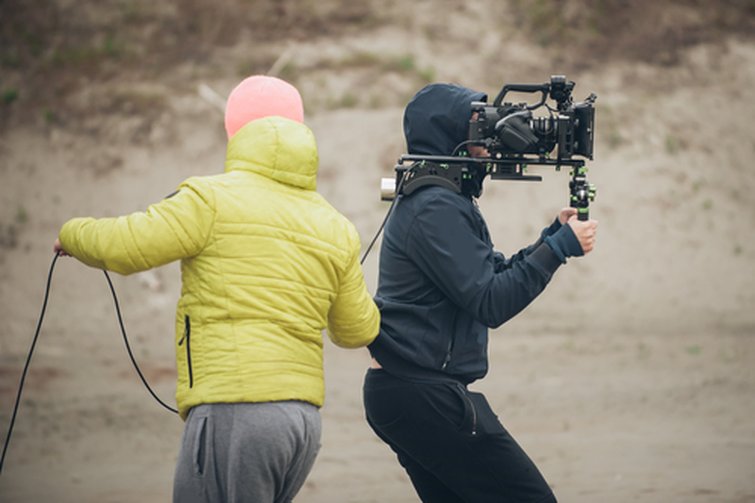
The role of a Production Assistant is a broad one, as they are the go-to person for whatever is needed on-the-fly. Image via guruXOX.
The scope of PA work — well, it’s broad, and the role is typically the lowest rank on set. The job can be done by just about anyone and that makes it perfect for anyone looking to start gaining real filmmaking experience. So, if you’ve got a friend who’s interested in filmmaking — or even a sibling who owes you a favor — bring them on as a PA.
Assistant Director
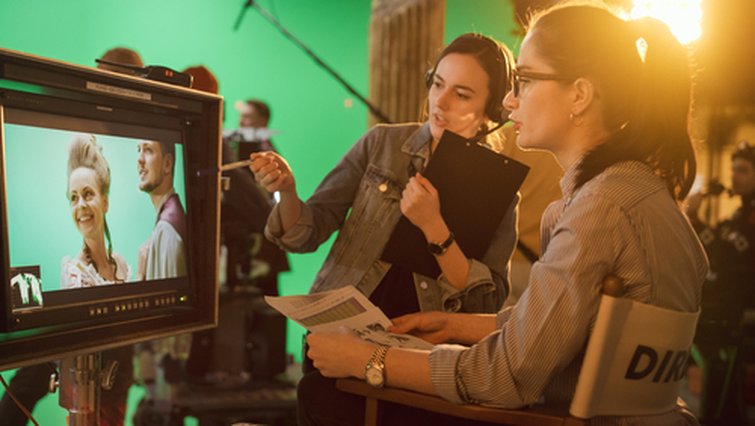
An Assistant Director works closely with the Director when planning a shoot. Image via Gorodenkoff.
We’ve all had those overly ambitious days when everything’s already running behind schedule before you decide to shoot that 101st take for “safety.” We can’t all be David Fincher, so a good assistant director will be there to keep you in check and encourage you to move on.
The assistant director is a “below the line” gig. Their job is to manage logistics, personnel, ensure communication between teams, and make sure the production runs smoothly, safe, and secure. They’ll create daily call sheets for the crew, plan out your production schedule, and keep things running like a well-oiled machine while you focus on the creative tasks at hand.
It’s still important for the director to work closely with the AD when planning a shoot. Communication is key. The AD will let you know when you only have a couple of takes left in the schedule or that it really is time to move on. It might be a bit of a struggle initially, but you’ll thank them in the long run when you manage to fit everything into your location’s small time frame.
Production Sound Mixer
As Shazam director David F. Sandberg likes to point out, “Good sound is more important than a good image.” And we already know this.
Nonetheless, maybe more often than not, we focus on shot composition and image resolution while an actor delivers a line while neglecting to consider how well that line is recorded.
Audio is often something we don’t notice until there’s something wrong. When we’re focused on the scene and the action, we forget to be aware of the noise in our surroundings. It’s only later that we discover the motorcycle in the background or the plane overhead. Now you have to find a way to fix it in post or resort to automated dialogue replacement (ADR) which can be costly, time-consuming, and sometimes doesn’t quite work.

The key to recording the best audio is to have a professional Sound Mixer on your team. Image via Alvarez del Pino.
Far too frequently have I seen audio recording be a “set it and forget it” affair which leads to unwanted sounds that initially go unnoticed. Just as frequently, I’ve seen the job get relegated to someone who happens to be unoccupied at the moment — “Hey Joe. You’re just standing there. Think you can you run audio for this scene?”
It’s vital to have a professional sound mixer on your team, someone who really knows what they’re doing. Having a person who’s entire role is dedicated to recording the best audio on set can make a big difference. Just like a DP with their camera, an audio professional knows their gear, how to use it, and how to get the best sound possible. Similar to how we aim to get it right in camera, you should do the same for your audio.
Production Designer
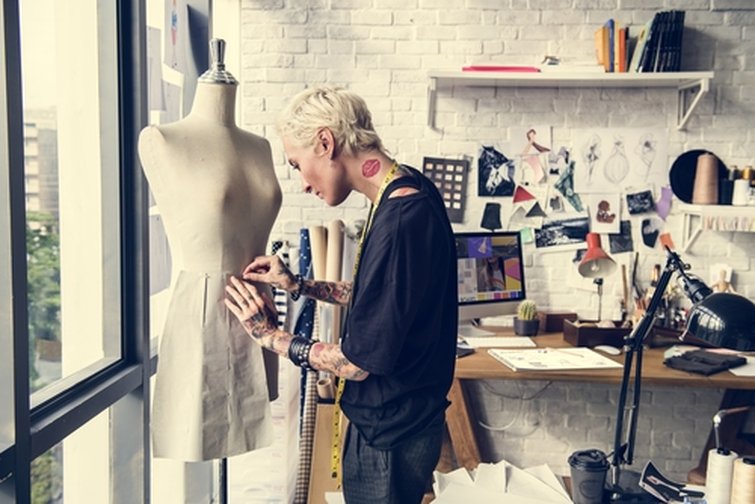
A Production Designer is in charge of making the film-world feel lived-in. Image via Rawpixel.com.
Last, but definitely not least, is a production designer. Production design is simply one of the most important roles in a production. A production designer is basically in charge of everything we see in front of the camera — from props and decorations, to make-up and locations. Their role makes your film feel alive, lived in, and real. A good production designer will understand the characters on the page and the tone of the film. They’ll dedicate their time fleshing them out through props, costuming, and set decoration.
In Hollywood, a production designer is the head of the art department, with makeup, props, and locations operating as their own sub-groups. In much smaller productions, a production designer could be responsible for most (if not all) of the art department’s responsibilities.
It took me far too long to realize the impact a dedicated production designer could have on my projects. I’d take the footage home and always feel like my scenes didn’t seem quite right, almost bare. While I always thought about key props and found decent locations, there was just something missing.
The first time I brought a friend on as a production designer, it was like magic. She had unique ideas for the set decorations, for the main character’s living space, and even how each character would do their makeup.
These were all things I’d not given enough thought to. It brought the characters and spaces to life. The way a character looks and the space they occupy can give us a lot of insight into their actions. I was so deep into getting the right shots, directing, and scheduling, that I’d never given these areas a moment’s thought. If I could only have one role to assist me on productions for the rest of my life, it’d be a good production designer.
When allocating resources and budget to a specific department, the return on production value is most seen within the production designer’s departments. Don’t worry about renting anamorphic or shooting 8K if the scene in front of the lens doesn’t look right to begin with. If the shot doesn’t work in 1080p, its not going to look any better in 8K.
I suggest providing as many resources as possible for the production designer to do their job the best they can, even if that means cutting some of the toys you were looking forward to using. A project shot on an iPhone with adequate production design will look levels above a film without adequate production design shot on a RED.
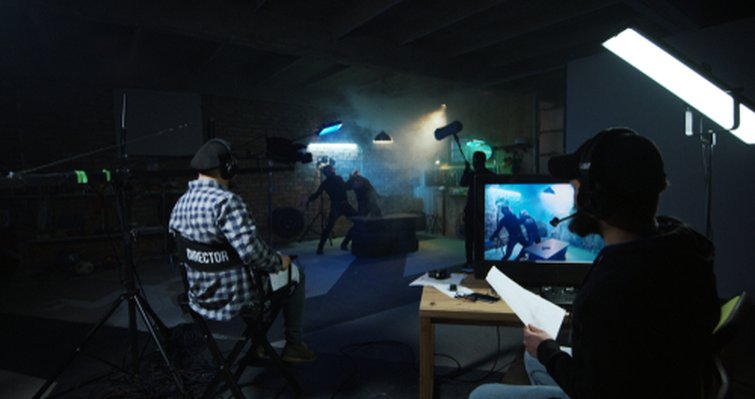
These often overlooked roles could be a major contender in the overall quality of your film. Image via FrameStockFootages.
Keep these roles in mind the next time you build a team. Having these spots filled will make your life a lot easier and improve the quality of your finished product. Just remember, just because you “can do,” doesn’t mean you should do it all. Filmmaking is a collaborative art-form — you’ll be glad you welcomed others into the process.
Keep reading about the ins and outs of navigating the film and video world:
- What Is a Line Producer? A Guide to Their Role and Responsibilities
- What are the Roles and Responsibilities of the First Assistant Director?
- The Pros and Cons of 4 Popular Camera Rental Options
- Essential Gear You Need to Start Your Own Production Company
Cover image via gnepphoto.

